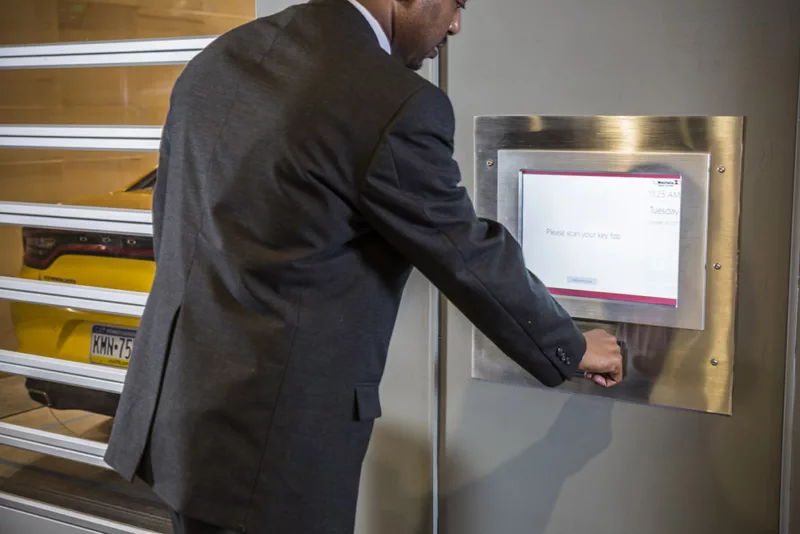
This past year has been challenging for everyone. Facility owners are struggling to keep their buildings operating safely in a time of pandemic, as it’s not an easy task. And as we begin to reopen our communities, office buildings, and institutions, that task will become even more difficult.
Even during government-mandated shutdowns, stopping the operation of public parking has not been an option. We will start to see that as our communities reopen, parking will become a larger problem than it was before because people are driving themselves, rather than taking public transportation. People likely won’t feel safe in crowded buses and trains until there’s a treatment and vaccine for the virus, which is completely understandable.
Like other common areas, parking facilities present a number of challenges when it comes to protecting employees, tenants, and visitors from COVID-19. For example, there are numerous “touchpoints” where people frequently touch surfaces that may have been used by many other people. As challenging as it may be, though, there are steps building owners and managers can take to make parking areas safer.
Automated Parking Systems
Typically, a conventional parking solution involves several touchpoints for drivers. They walk in public areas, use parking elevators or stairs, open doors, and in some cases, accept a valet to enter then drive their cars. Fully Automated parking systems provide a completely contactless solution, designed to work with no human intervention.
Automated Parking eliminates most of those touchpoints. Drivers park in a transfer area, check their vehicles for any belongings they may need and leave. It’s that simple. The automated system handles the parking and retrieving process with no human intervention. From entry to exit, no other person touches the vehicle besides the driver. Not only is this safer due to less touch points, but the owner of the vehicle also has ease of mind that their belongings will not be tampered with. On top of that, vehicles are at less risk for door dings or accidental scratching of paint.
Users may utilize the kiosks to complete the parking and retrieval process or they can just use a mobile app on their smartphone to fully avoid touching “common surfaces” of any kind. Yet, users still get the personalized and high-end valet parking experience and comfort, without anyone entering their vehicle.
An automated parking system provides not only a safer environment for users or drivers, but it also allows developers to save money through reduced operating, construction, and land costs, as well as provide added value through the increased space savings.
These can be difficult — and scary — times. As you build strategies for protecting tenants, visitors, and staff from COVID-19 and other public health threats, don’t forget to include automated parking experts in your planning.
